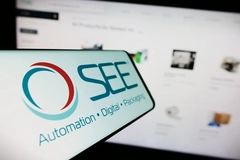Non-fungible tokens: Crypto art propels packaging design into digital ownership age
02 Sep 2021 --- Non-fungible tokens (NFTs) are redefining the digital art industry, and encouraging F&B companies to reassess how they approach their visual brand identities and on-shelf packaging designs.
NFTs allow people to buy and sell ownership of unique digital items and keep track of who owns them using blockchain technology.
PackagingInsights catches up with creatives from Landor & Fitch, Pearlfisher and ROOK/NYC to discuss how F&B producers are capitalizing on brand exclusivity opportunities amid the advent of NFT.
“Our ‘re-evaluation’ of what is most valuable in life has changed and shifted from physical appreciation to virtual affirmation,” comments Shaun Loftman, executive creative director at Landor & Fitch.
“In commercial terms, what we hold most dear today is no longer seen as something built on the equity of time, tradition and longevity – but rather more digitally accessible, temporary and shareable.”
Campbell’s continues its pop-art phenomenon status with its first NFT collection.FMCGs bank on crypto art
NFTs can technically contain anything digital, including drawings, animated GIFs, songs, or items in video games.
An NFT can either be one-of-a-kind, like a physical painting, or one copy of many, like trading cards, but the blockchain keeps track of who has ownership of the file.
FMCG brands have begun tapping into this craze. This July, four Coca-Cola NFTs sold out within 72 hours, garnering a winning bid of US$575,883 in an online auction on OpenSea.
Campbell Soup Company celebrated its new can label design with the soup producer’s first-ever custom NFT, created in collaboration with street-style illustrator Sophia Chang.
“Of course, these are iconic brands where merchandise and a cult-following already exist,” says Courtney Tight, senior client director at Pearlfisher.
“We can infer from their success with limited edition offerings, that these giants will do well using NFTs to extend their brand’s footprint.”
Driving brand exclusivity
Other examples of F&B companies tapping into the trend range from wine to fast food. “There’s something interesting about access, exclusivity and the increasing rhetoric around ownership culture that accompanies this new form of digital identification,” Tight notes.
Yahyn launched its first NFT allocation in April, a first in the wine industry.DTC e-commerce wine start-up Yahyn launched what it says is a world-first in NFT wine allocation this April. “Imagine buying your allocation through an NFT, and if you decide to crack your bottles open, you still have the digital asset to hold to your collection,” Yahyn marketing director Jack Ambriz comments.
He also listed consumers owning part of the vineyard’s story through art, or giving wine auctions a new way to raise money to charities, as additional social benefits.
“We believe [NFTs] illustrate a greater shift and consumer desire, not only for digital access but for true digital ownership. From this point forward, they will continue to be some form of trade or currency and that means there are a lot of opportunities for brands to explore,” Tight reveals.
The trend is democratizing: Pizza Hut Canada debuted its 1 Byte Favourites, the world’s first “non-fungible pizza” in March, offering 8-bit slices (8 bits = 1 byte) for approximately the cost of one real bite of pizza, or 0.0001 Ethereum (ETH).
Meanwhile, all profits from TacoBell’s NFT Taco Art will be donated to the Taco Bell Foundation to empower young people to pursue their careers and educational pathways.
NFTs’ environmental impact
For those still grappling with this innovation and challenger brands alike, Tight maintains a significant consideration needs to be the effect that NFTs will have on the environment.
Digital art requires massive energy consumption, adding to the overall carbon footprint created by cryptocurrencies, ETH in particular.
 Taco Bell announced its NFT launch on Twitter in March (Credit: Taco Bell Corp).“What’s the cost of running and maintaining the blockchain? Can every brand deciding to make a play in this space do so sustainably?” she questions.
Taco Bell announced its NFT launch on Twitter in March (Credit: Taco Bell Corp).“What’s the cost of running and maintaining the blockchain? Can every brand deciding to make a play in this space do so sustainably?” she questions.
“After all, we all have a moral obligation to leave the world better. NFTs are a new method for gaining brand credential, but if it comes at the cost of the world we live in, then we need to evaluate their role in branding.”
In March this year, giving in to this social pressure, digital art online marketplace ArtStation received harsh backlash from people who think dealing in crypto art is environmentally unethical.
ArtStation succumbed, canceling the market platform launch within hours of its announcement.
Addressing eco-concerns
Nevertheless, ROOK/NYC co-founder Rebecca Thomas Christou believes NFTs are “here to stay,” but on the condition the environmental impact of crypto-art is addressed. However, Loftman envisions the future of NFT will likely be a sustainable economy for two reasons.
“It will allow for the sizable investment in brand design, print and production to be reduced by shifting to offline channels, where the product can take advantage of more targeted, flexible, and efficient brand delivery,” he says.
“Strong brands will inevitably have the ability to live way beyond the physical shelf and onto other platforms and public forums, and so NFTs will enable food companies to help embrace this new reality.”
1 Byte Favourites sold for the equivalent of one bite of pizza (CNW Group/Pizza Hut Canada).The future of NFT in F&B
There are several branding and financial possibilities for F&B companies to use NFT, but arguably their success is dependent on how strategically they are used.
“Beyond the pack itself, food companies will need their brands to ‘stand for something’ to be able to express and export an ethical virtue,” Loftman maintains.
“Already we are seeing many examples of this: from environmentally ‘good for the planet’ causes to child education and poverty charity outreach. When food companies take a long hard look at their brand’s equity and identify how and why supportive communities can be formed, they can help drive the value and relevance of an NFT.”
“It’s another medium for brands to play with creatively, and that’s really interesting. It will be the challengers in the food space today that will set the tone of what’s to come,” Thomas Christou concludes.
By Anni Schleicher












